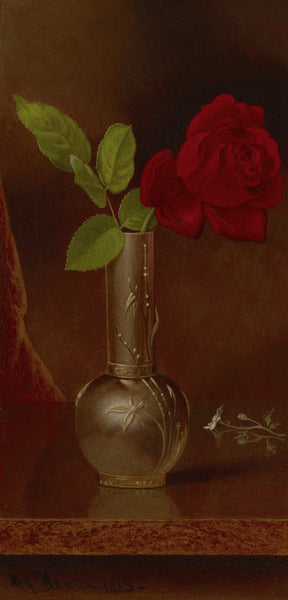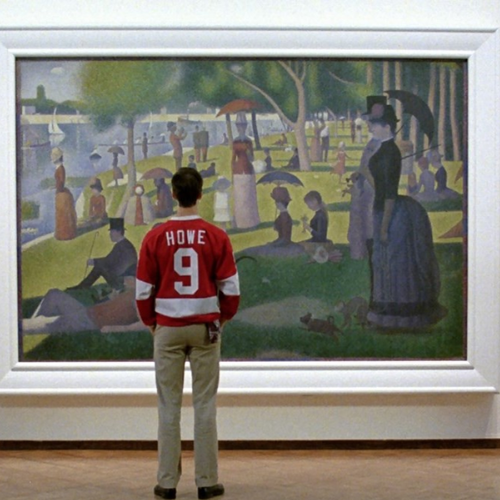Sacred Blooms
In the canon of art history, an “Old Master” refers to a highly trained painter working in Europe during and before the 18th century, including the Renaissance and Baroque styles. Renowned Old Master paintings, such as those by Leonardo da Vinci, Caravaggio and Botticelli, have immortalized iconic scenes from the Bible, such as the Annunciation, wherein Gabriel announces to the Virgin Mary that she will bear the son of God.
These masterpieces consistently feature white lilies, typically at the Virgin's feet or held by Gabriel himself. Representing purity and rebirth, this flower became a recognizable symbol of Mary's chastity. In fact, the white lily is called the Madonna Lily to this day. White lilies have retained their significance, often chosen for weddings and funerals where their presence symbolizes rebirth, offering a poignant goodbye to different phases of life.
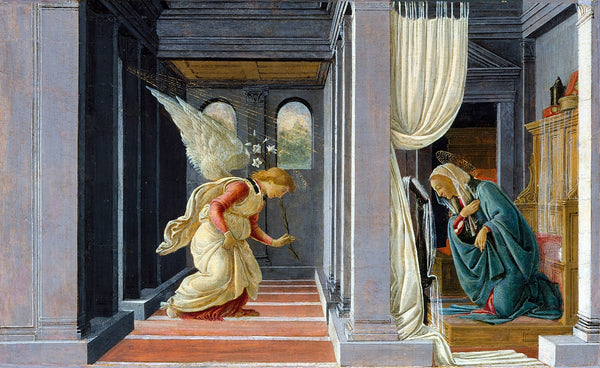
When not portraying religious scenes, Old Masters frequently turned their attention to still lifes. These paintings exhibit remarkable lifelikeness, serving as a testament to the artist's skill and mastery of light. Characterized by vibrant and intricate compositions set against dark backgrounds—a technique popularized by Baroque artists known as chiaroscuro—these works feature rich details and finishes, enhancing their luminous qualities, particularly under candlelight.
Tulip Mania
Due to flourishing global trade during the 17th century, elaborate still lifes gained immense popularity in Holland, often serving as a means for trade merchants to exhibit their exotic wares. The tulip, an enduring symbol of The Netherlands to this day, was introduced to Europe from Persia and Turkey in the 16th century and quickly gained immense popularity, triggering the infamous "tulip mania" and a market crash. Depicting these highly prized flowers in paintings symbolized Dutch prosperity, and they became status symbols in the homes of the most successful merchants.
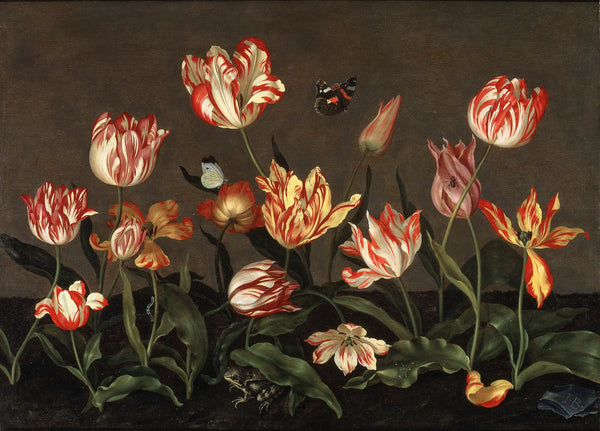
Despite the omnipotent power to select flowers blooming in contradictory seasons, artists frequently included a handful of wilting flowers, serving as a poignant symbol of life's impermanence. This phenomenon emerged in conjunction with an immense increase of material wealth in Holland. These moralizing still lifes, known as memento mori (mementos of mortality) or vanitas (emptiness), prominently feature dying flowers and skulls that remind viewers of the constant cycle of life.
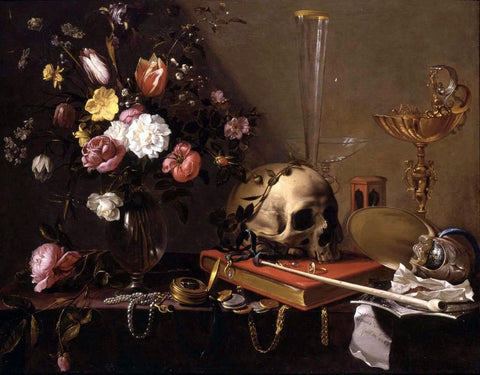
Types of Flower Symbolism
In addition to including flowers rarely found together in nature, artists chose blooms with rich symbolic histories. Each flower embodies allegories for complex emotions—transforming what initially seems like a simple painting into a narrative of profound complexity.- For example, the rose has long represented love, a symbol that persists to this day. The various colors of roses add further depth to their meaning, with deep red symbolizing passionate love and lighter shades evoking pure love. Yellow roses, on the other hand, symbolize friendship, making them an ideal gift for a cherished companion.
- Poppies frequently evoke darker themes, often symbolizing sleep or even heartaches and death, due to their historical association with opium production.
- Marigolds are traditionally linked to difficult goodbyes, often bestowed during times of mourning and grief.
- Hollyhocks, on the other hand, can be signs of good luck and often symbolize the cyclical nature of life.
Influence of Dutch Still Lifes
The Dutch influence extends worldwide, with numerous European artists receiving training under these masters. Among them was the popular French artist Jean-Baptiste Monnoyer, who studied in Antwerp. Monnoyer's works continue the legacy of Flemish still life painting that thrived during the 17th century.
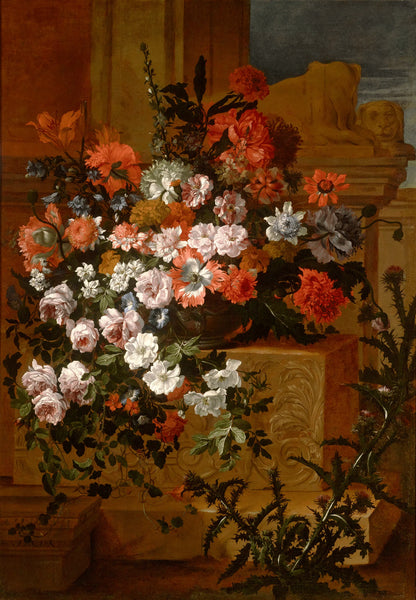
Secret Gardens
During the Victorian era, the fascination with flowers continued to flourish. More established trade routes supplied greater accessibility to exotic blooms, while scientific advancements provided a deeper understanding of botany. At the same time, public displays of affection were considered taboo in Victorian societies, compelling lovers to find secret ways to express their desires for one another.
Many Victorian households owned a book on the language of flowers to interpret their bouquets. Some even possessed intricately crafted posy holders to showcase their thoughtfully arranged flowers and convey their secret messages.
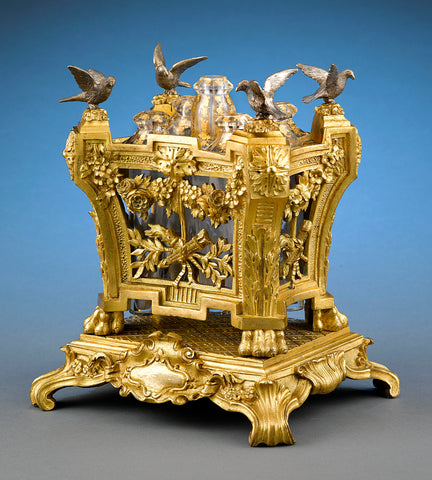
Women frequently adorned themselves with sweet and lovely blooms from their admirers, wearing them in their hair and on their wrists and dresses. These corsages carried various meanings, such as gestures of flirtation if your companion chose to don a rose on her bust. This custom has endured, and today many wear exquisitely crafted floral jewelry as an homage to this era.
Uncovering a Victorian Bouquet
So what messages did the Victorians convey through their bouquets? The renowned work Language of Flowers (1884) by Kate Greenaway aids in decoding flower symbolism through its comprehensive list of flower meanings, accompanied by delightful illustrations also by Greenaway. Inspired by the traditions of the 17th and 18th centuries, roses signify love and sensuality, while a thornless rose signifies love at first sight. A red and a white rose placed together symbolized unity. Fragrant violets were exchanged among Victorian lovers as tokens of devotion, symbolizing modesty, virtue and faithfulness.
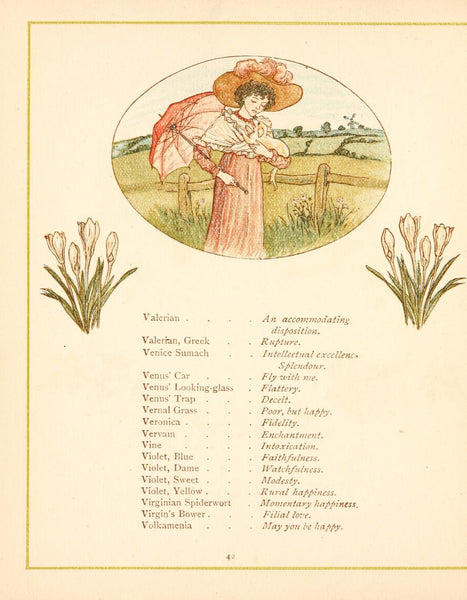
Daffodils and jonquils, the first heralds of spring, symbolize love and fresh beginnings. Black calla lily blooms were often gifted to convey notions of mystery and elegance. Birdsfoot Trefoil could be given passive-aggressively as a diss to those on the receiving end. Perhaps this is because Birdsfoot Trefoil is very hard to weed out and the petals release of low doses of Hydrogen cyanide when chewed. Kate Greenaway cites their meaning as “revenge” in Language of Flowers. Peonies were believed to symbolize a happy marriage and remain a popular choice in wedding bouquets to this day.
Victorian artists aimed to depict this intricate code in their work, acknowledging both their contemporary culture and paying homage to the Old Masters. A beautiful example is Red Rose in a Standing Vase, by American artist Martin Johnson Heade. Although Heade is known for tropical flower paintings, this work featuring a classic rose is completed in the same year as his marriage in 1883. The newlywed artist captures sensuality and passion in his romantic depiction that demonstrates mastery over texture and color and pays homage to his unequaled love for his bride with the iconic power of the romantic rose.
Continuing the Legacy
Throughout the 20th century, artists continued to find inspiration in the natural world. In part due to the widespread availability of the camera in the 20th century, artistic focus shifted away from precise detail towards more abstract concepts and representation.Impressionists
Impressionists sought to capture the transient effects of changing light on their surroundings. Among them, Claude Monet stands out for his extensive series of paintings depicting his garden, each capturing a unique play of light. Through these works, Monet endeavors to portray the fleeting quality of life.
Post-Impressionists
Paul Gauguin, a French Post-Impressionist, pushed the boundaries of abstraction further, as evidenced in his early still life Fleurs dans un vase avec partition musicale (Flowers in a Vase With Musical Score). Here, Gauguin explores natural beauty, finding significance and allure in the ordinary aspects of his surroundings. Like in earlier vanitas, several flowers have fallen from the bouquet, perhaps a nod to the cycle of life.

Expressionists
Continuing the legacy of the Impressionists, the Expressionists set out to convey emotional experiences rather than simply depicting the physical world. An exquisite example of this is Alexej von Jawlensky’s Blumenstilleben (Still Life With Flowers). This work showcases a deeply personal interior scene teeming with life through the vibrant bouquet. While the colors and textures may not adhere to realism, the flowers evoke powerful emotions.

Modernists
Renowned for her flower paintings, Georgia O’Keeffe portrayed flowers in such magnified detail that their forms transcend into the realm of abstraction. To O’Keeffe, these simplified floral forms represent a life of simplicity and a profound connection with nature and the self. She once expressed, "It is only by selection, by elimination, and by emphasis that we get at the real meaning of things."
Through her paintings, O’Keeffe encourages viewers to engage in contemplation and reflection, urging them to slow down and delve deeper into the essence of existence. Her contributions have been instrumental in shaping the American Modernist movement.

Modern Innovations:
As art movements increasingly emphasized abstraction, floral symbolism continues to hold significance within the canon of art history. Vases Aux Chrysanthèmes by Auguste Herbin exemplifies this rich history. This bold and vibrant still life, created by French painter Auguste Herbin, showcases the early seeds of his pioneering role in popularizing Modernist abstraction. Influenced by the Cubists, Herbin used bold, angular brushstrokes and an intense color palette that begins to blur the line between abstraction and naturalism.
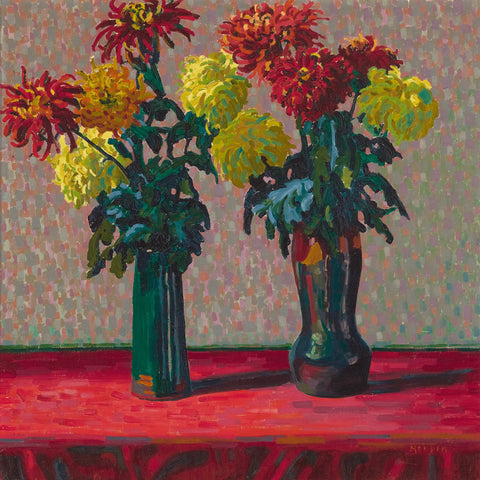
The journey of florals through art history reveals their long history of symbolism across cultures and periods. From religious art to still lifes, Victorian messages and modern interpretations, flowers have served as powerful metaphors that provide enduring fascination. We can only speculate how artists, poets and lovers will further explore and interpret the symbolism of flowers in the future, attributing new meaning to these timeless natural wonders.

